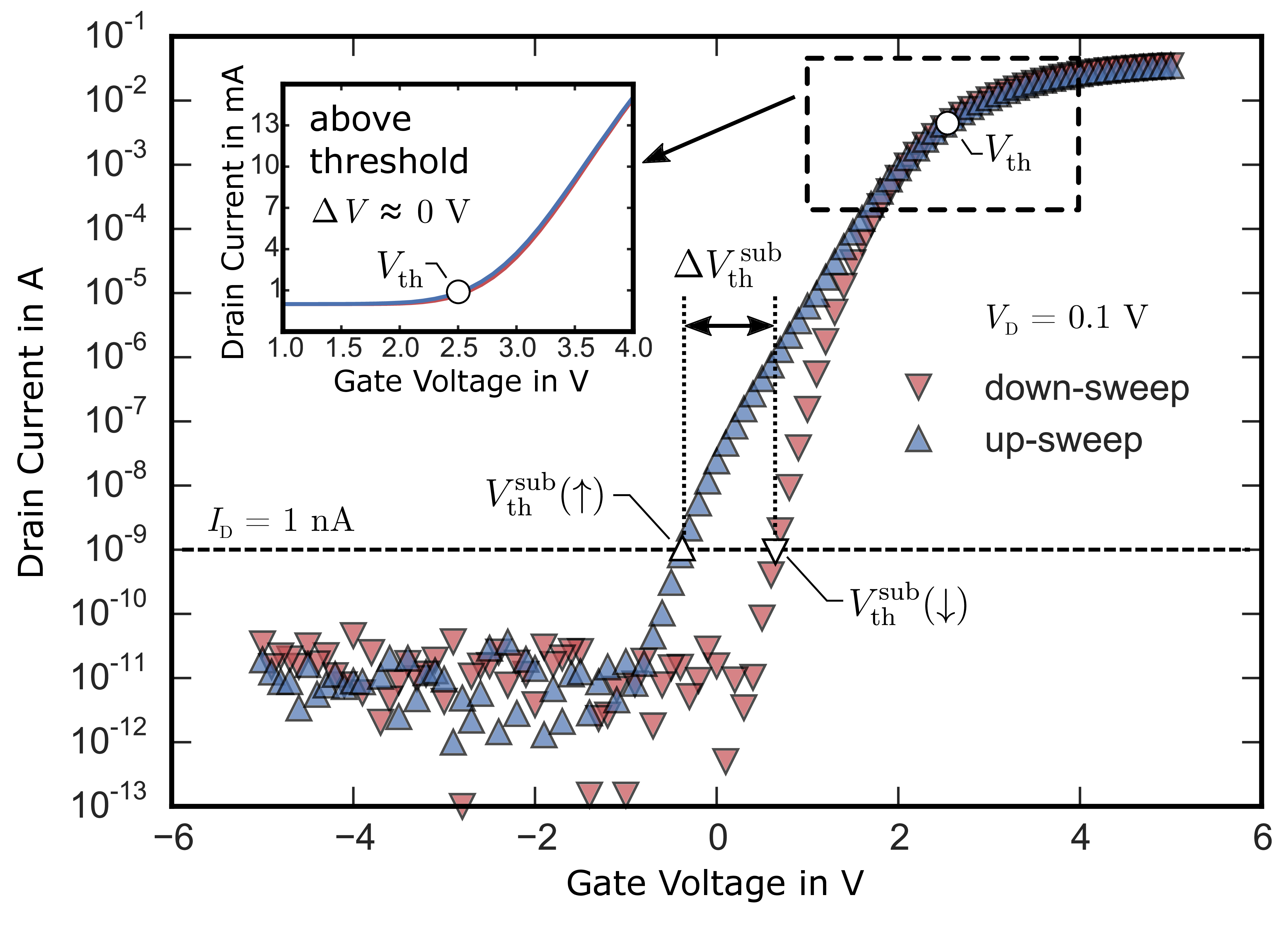« PreviousUpNext »Contents
Previous: 1.3 Methodology Top: Home Next: 2.2 Investigated devices
2 On the first Component: the Subthreshold Hysteresis
2.1 Occurrence of the hysteresis
State of the art power MOSFETs based on SiC show a drain current sweep hysteresis between gate voltage sweeps from accumulation to inversion and vice
versa. An example of this phenomenon is given in Fig. 2.1 for a
sweep from −5 V to 5 V
(up-sweep, blue) and from 5 V to −5 V (down-sweep, red) at a fixed drain voltage
of 0.1 V. The hysteresis is mainly
visible in the subthreshold regime where the on-resistance
of the device is still in the range of several
megaohms and becomes less significant as the gate voltage approaches the threshold voltage
. Above
, which is approximately at
for the tested device, the
hysteresis disappears completely (inset).
Figure 2.1: Sweep hysteresis between the up-sweep starting at −5 V (blue, rectangles up) and the down-sweep starting at 5 V (red, rectangles down). The dashed horizontal line represents the readout current
of at 1 nA. The inset shows the input char-
acteristics in linear scale above the threshold voltage where the hysteresis effect vanishes.
In the next sections, we define the gate voltage at which the drain current reaches 1 nA, at a fixed drain voltage
of 0.1 V, as subthreshold voltage
Note that the difference between and
is the extraction current at the drain terminal.
is extracted at a drain current of
1 µA and represents the "real" threshold voltage of the devices. On the other hand,
is extracted in the subthreshold regime at a
drain current of 1 nA. The subthreshold voltage depends on the sweep direction as indicated in Fig. 2.1. A gate sweep in the positive
direction from accumulation to inversion (up-sweep,
) starting at
results in a
of −400 mV, whereas
a gate sweep in the negative direction from inversion to accumulation (down-sweep,
) starting at
leads to a
of
. The total hysteresis between the
up-sweep (
) and the down-sweep (
) is expressed as a subthreshold voltage
shift
In the example given in Fig. 2.1, this corresponds to .
Although the presence of is an outstanding difference between
state-of-the-art SiC and Si based MOSFETs, the effect is poorly investigated and little to no literature on this specific topic is available. However, for a comprehensive knowledge on performance and reliability limiting factors of
state-of-the-art and future devices, a deeper understanding on the subthreshold hysteresis mechanism is required.
Previous: 1.3 Methodology Top: Home Next: 2.2 Investigated devices
